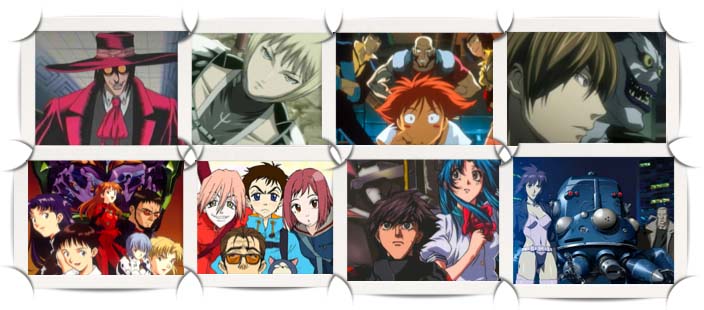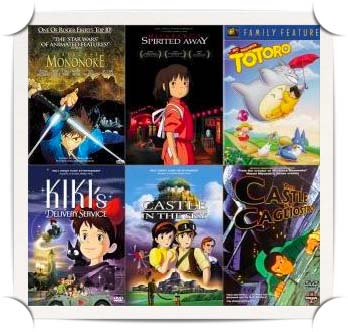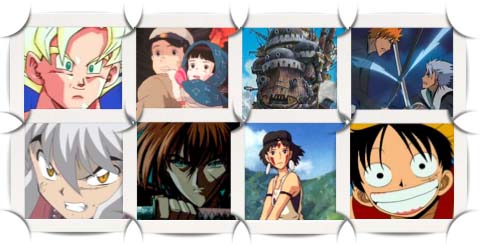
The immensely popular genre of Japanese animation (known by otakus spanning the globe as, “anime”) began its long and prolific life towards the beginning of the last century, and especially picked up speed in the public sector during the post-war era of Japan. It finally began to take a foothold in the late seventies and early eighties, and its popularity spread like a virus throughout all of Japan until ultimately contaminating the West as well.
Anime has begun to take a life of its own, and with the help of the digital age (most notably the internet) it has gained notoriety far beyond Japanese shores. Its widespread appeal stems from the fact that its many different forms and styles are as eclectic as the viewers themselves. There is something for anyone no matter what you are partial towards. Whether young or old, interested in mecha/space/samurai/guns/or even superhuman abilities, anime is truly something for the masses.
The problem with anime, however, is that over time it has developed a certain stigma attached to it. Many people dismiss anime simply because their limited exposure has relegated them to Sailor Moon, Dragonball Z, and the like. Yet, what many don’t seem to realize is that these marathon animes – aired on late night television blocks such as Adult Swim – aren’t necessarily representative of the genre in its entirety.
 In the last few decades animes with more mature themes have begun to surface. Evangelion, widely considered by many to be their favorite and the epitome of anime, delved into the inner recesses of the human mind and attempted to analyze the human psyche throughout its very mature plot line. It featured themes of psychology and psychoanalytic theory (especially in the introspective final episodes of the series), as well as religious anecdotes interspersed throughout. It also had strong, pervasive themes of death as well as featuring the main protaganist coping with his own mental deficiencies and eventually accepting himself.
In the last few decades animes with more mature themes have begun to surface. Evangelion, widely considered by many to be their favorite and the epitome of anime, delved into the inner recesses of the human mind and attempted to analyze the human psyche throughout its very mature plot line. It featured themes of psychology and psychoanalytic theory (especially in the introspective final episodes of the series), as well as religious anecdotes interspersed throughout. It also had strong, pervasive themes of death as well as featuring the main protaganist coping with his own mental deficiencies and eventually accepting himself.
Anime artists, such as the world renowned Hayao Miyazaki, have further helped to spread the popularity of the genre. His highly successful, full-length animation features tell outstanding stories and usually feature very mature themes or have a strong undertone of humans and their interaction with the environment. His movies are substantially influential and have inspired many Western companies - due to their successes – to create cartoons that bear a strong semblance to their Japanese counterparts (such as Avatar and Teen Titans). A few of Miyazaki’s most notable films are Spirited Away, Princess Mononoke, My Neighbor Totoro, Howl’s Moving Castle, Nausicaa of the Valley of the Wind, The Castle of Cagliostro, Laputa: Castle in the Sky, Kiki’s Delivery Service and several others. His movies have gained him fame and recognition outside of Japan and My Neighbor Totoro has become a childhood classic.
due to their successes – to create cartoons that bear a strong semblance to their Japanese counterparts (such as Avatar and Teen Titans). A few of Miyazaki’s most notable films are Spirited Away, Princess Mononoke, My Neighbor Totoro, Howl’s Moving Castle, Nausicaa of the Valley of the Wind, The Castle of Cagliostro, Laputa: Castle in the Sky, Kiki’s Delivery Service and several others. His movies have gained him fame and recognition outside of Japan and My Neighbor Totoro has become a childhood classic.
Over time, anime has gradually seeped into almost every recess of our culture. The video game industry has released games (usually fighting types) from popular animes such as Dragonball Z, Bleach and Naruto which have grossed millions of dollars. Manga, the written form of anime which usually precedes the animated form, can be found in bookshelves across the country in book stores such as Borders, Barnes and Nobles, and Walden Books. Merchandise and cosplay items can be purchased from countless sites across the internet and in many popular stores. Fast food restaurants, such as Burger King and McDonalds, have even featured certain animes with their Happy/Kid’s Meal toys. School supplies have even joined in the marketing frenzy with their notebooks, folders, and pencils donning images of popular kid’s animes such as Sailor Moon (several years ago), Pokemon, and the ever-present Dragonball series. The television industry, with channels such as Cartoon Network, even took notice with the trend of increasing popularity by setting aside a program block titled Adult Swim that hosts english dubbed anime.
Many females also have a special attraction towards anime because many often feature strong female protaganists who are sometimes heavily armed or in charge (although sometimes scantily clad as well). Animes have also become the preferred medium for the Japanese because they do not run into as many constraints as the movie industry and can often depict things not easily portrayed in a live-action film. And even adults in Japan have begun to enjoy watching animes as they have slowly evolved more complex and mature storylines.
Much of the allure of anime comes from anime’s usual depiction of an alternate reality. This serves to give many viewers a chance to temporarily escape from real-life and enter into a fantasy realm where the restrictive rules of reality do not always apply. With the many varied types and diverse animes out there, it is more than likely that there really is an anime for everyone.
